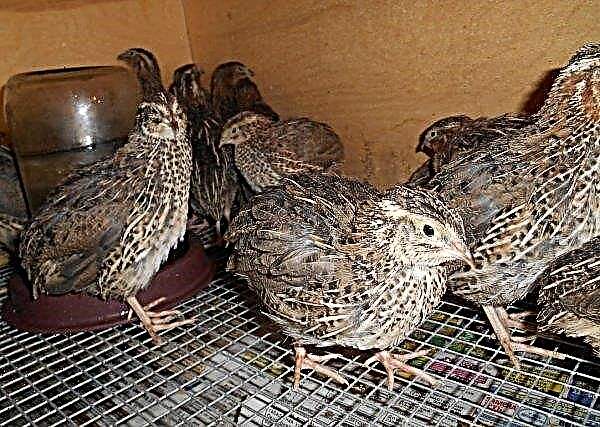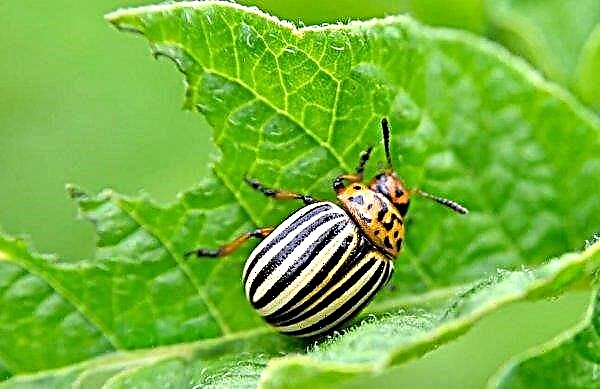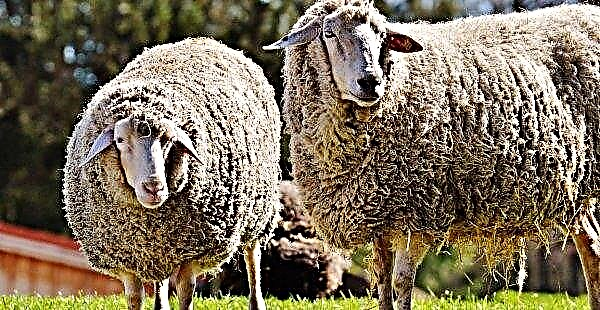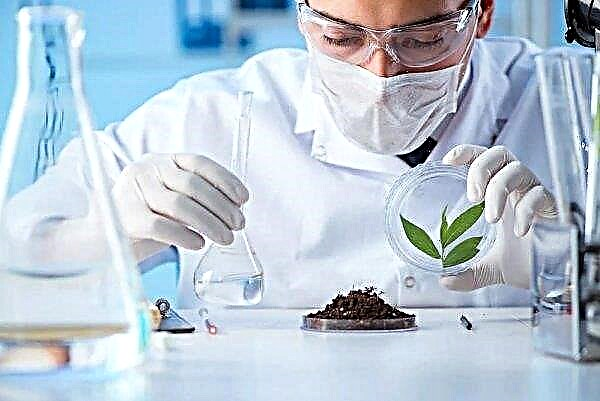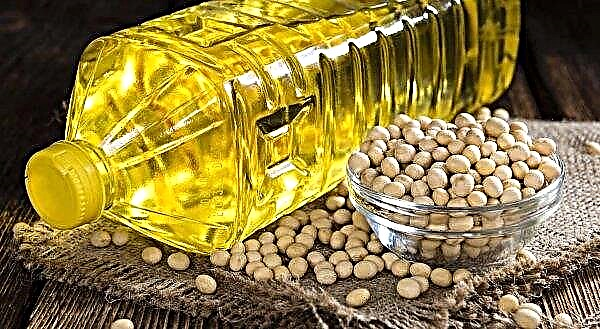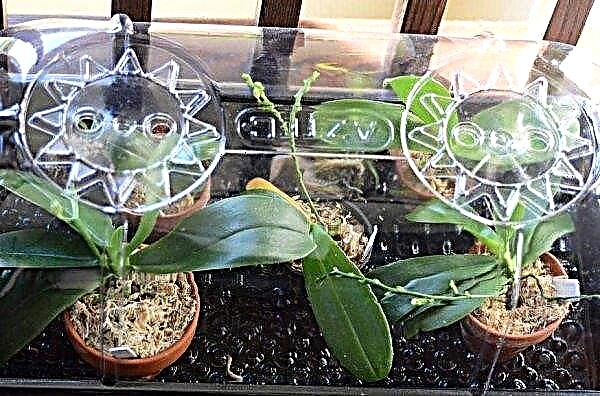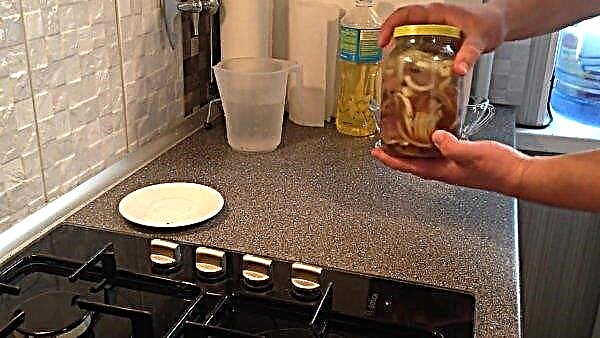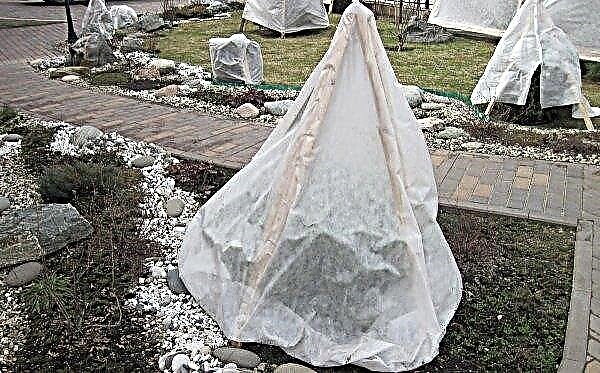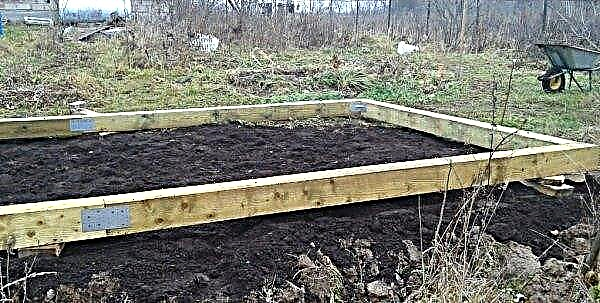Often summer residents are faced with such an unpleasant problem as the curvature of cucumbers. In order not to lose precious time for growing deformed vegetables and not to lose crops, it is necessary to understand the causes of this phenomenon. As a rule, they are associated with violations of agricultural technology and a lack of necessary substances. How to prevent the curvature of the fetus, and why most often gardeners find a problem at the end of the harvest season - see our article.
Why crooked cucumbers grow: the main reasons
Under the curvature of the fetus is understood the irreversible process of changing the shape of the fetus. This suggests that they lack auxins - hormones that stimulate the flow of nutrients and tissue growth. This defect can manifest itself in the form of a curved vegetable, acquiring a barrel-shaped, pear-shaped, hooked or drop-shaped form. Cucumber can acquire various types of deformation, bend by hook, be thick, bloated, crooked and uneven. Each vice is not unreasonable and carries specific violations at a certain stage of caring for the green. Consider each of the reasons in more detail and devote a separate section to the methods of prevention and treatment.
Cucumber can acquire various types of deformation, bend by hook, be thick, bloated, crooked and uneven. Each vice is not unreasonable and carries specific violations at a certain stage of caring for the green. Consider each of the reasons in more detail and devote a separate section to the methods of prevention and treatment.
Trace deficiency
One of the most common causes of abnormal formation of green leaves is a lack of trace elements and nutrients necessary for the normal development of the fetus.
Most often, cucumbers suffer from a lack of potassium and nitrogen. In the first case, the vegetable turns yellow, becomes barrel-shaped, swells with a "light bulb" and thickens on one side (like a pear). Or they can take the form of a cone, in which case the fruits are poured with juice on the one hand, and on the other they fade, which visually resembles a sharpened rolling pin, vegetables become visually sharp.
This problem in most cases manifests itself by the middle or the end of the season, when the land is exhausted and gives all the best to its fruits. Another reason may be a lack of nutrition or its poor quality. In the second case, the cucumbers become light green, narrow at the base of the sprout and expand on the opposite side, becoming thus pot-bellied, like bulbs. The cucumber stops growing along with the sprout and leaves, which acquire a yellowish color and bend inward, the stem brightens and stiffens over time. This problem occurs due to improper composition for fertilizing the soil.
In the second case, the cucumbers become light green, narrow at the base of the sprout and expand on the opposite side, becoming thus pot-bellied, like bulbs. The cucumber stops growing along with the sprout and leaves, which acquire a yellowish color and bend inward, the stem brightens and stiffens over time. This problem occurs due to improper composition for fertilizing the soil.
For both methods, complex vitamin fertilizers are used, which we will discuss below. There is also the problem of a shortage of several trace elements. Such vegetables take on a diverse ugly shape, become short, inflate or grow in a “barrel” and require careful treatment.
Did you know? One of the most unusual varieties of cucumber is Tladianta dubious. This type of cucumber has a rounded shape, first pale yellow, and then rich red. It is used for two purposes: before ripening - as a cucumber for pickling and preservation, and after ripening - as a sweet fruit for making jam and jams.
Violation of agricultural technology
The change in the natural shape of the fetus can be affected by the agrotechnical procedure, starting with planting seeds on the garden bed. As a rule, errors that lead to curvature of the fruits are associated with the stage of planting and harvesting. It is very important to choose the right site for growing cucumbers. This should not be a shady area obscured by trees or buildings. It is also necessary to pay attention to the rules of crop rotation and change the place for planting cucumbers every season. Thus, the soil will hold the necessary proportions of nutrients and give them to the fruits. The best predecessors for cucumbers may be:
The best predecessors for cucumbers may be:
- potatoes;
- carrot;
- cabbage;
- peas.
Important! A gross violation is the planting of pollinated and self-pollinated varieties nearby. In the case of such a union, two types of varieties are crossed and the fruits of both of them are deformed, slow down in growth and acquire various forms of defects, including taste (the fruits become bitter).
Violation of the rules of care
The most common cause of cucumber bending in the process of caring for greenery is non-compliance with the irrigation regime or the wrong water temperature. Cucumber is a moisture-loving plant, especially in the early stages of ripening. The lack of water provokes overdrying of the plant and leads to hardness and deformation of the fruit. They can take on a different look: be round and twisted. After the first ovaries appear, the soil must be richly enriched with moisture and watered every 2-3 days.  Regular mulching, which can be started with the first sprouts, can be a useful nourishment and indicator of moisture. Cold watering can be a killer factor. Since low water temperature blocks the transfer of such an element necessary for cucumbers as potassium, it will be optimal to water at a water temperature of +23 ... + 27 ° С.
Regular mulching, which can be started with the first sprouts, can be a useful nourishment and indicator of moisture. Cold watering can be a killer factor. Since low water temperature blocks the transfer of such an element necessary for cucumbers as potassium, it will be optimal to water at a water temperature of +23 ... + 27 ° С.
During the season, it is necessary to monitor the thickening of the sprouts. Due to too abundant growth, overlapping light and oxygen for the lower fruits is possible, which can lead not only to their deformity, but also to the development of rot. Experienced gardeners also do not recommend the abuse of growth stimulants. If their proportions and processing regime are not observed, sprouting of ovaries and fusion of fruits are possible.
If you notice that the fruit grows with an irregular shape along with leaves, sprouts and ovaries, you may have kept the seedlings in a cool and dark room, or it was planted in the open ground too early. Before seedlings will be moved to the bed, at least 25 days must pass. Therefore, the planting time must be calculated based on the climatic zone of your region, because at temperatures below + 15 ° C, seedlings will lose vitality and begin to develop incorrectly, which will affect the unhealthy shape of the fruit.
Untimely Harvest
Another principle of agricultural technology is the correct and timely harvest. At the peak of the "cucumber season," the harvest should take place every 2-3 days. If distribution of fruit is distributed unevenly, this leads to improper balance of nutrients, as a result of which some vegetables get in excess, and some need them. In both cases, the fruits begin to develop incorrectly and turn yellow. Deformed greenbacks change their initial shape, twist, can be bent, hook-shaped, looped or grow "barrels". To avoid this problem, it is necessary to plan the crop evenly and evenly, regulating the ripening of fruits throughout the garden.
In addition to the reasons considered, factors that are independent of the gardener can affect the incorrect formation of vegetables. First of all, these are weather conditions.
Important! Too sharp temperature drops (from a hot day to a cold night) negatively affect the ovaries and ripening cucumbers. As a result, we get an unhealthy crop with twisted, barrel-shaped or hook-like cucumbers.
The second factor is the characteristics of the variety. Before sowing seedlings, carefully read the characteristics of the vegetable, because there are varieties for which a hook-shaped or bent up form is the norm.
What to do and how to feed cucumbers?
If preventive measures were not taken on time and the fruits have already formed incorrectly, then it will be extremely difficult to correct the situation. Consider the steps step by step:
Consider the steps step by step:
- If the gardener noticed that the fruits grow deformed, it is first necessary to identify the cause and take all possible measures. To create the best conditions for the plant to grow, you can start by removing the extra sprouts, leaves and ovaries that cover the lower layers of the fruit from light. Thus, we will save the fruits from a lack of oxygen and light and save from the formation of rot.
- We regularly clean the bed of weeds and slightly loosen the soil around each bush so that it lets air through and absorbs useful elements. After loosening, the soil will absorb nighttime moisture, which will protect it from stagnation and crusting.
- Water cucumbers abundantly in dry summers, using drip irrigation if possible.
- Mulch the soil with any kind of mulch. This will save the earth moisture and balance the flow of nutrients.
- With a lack of trace elements, we water the bushes with a solution of potassium salt, and after a few days we feed the plant with an ash solution. Ash is a complex fertilizer, because it affects the acidity of the soil and contains calcium, potassium, manganese, iron, sulfur. Feeding with an ash solution can serve to prevent deformation of the fruit, and to treat an already diseased plant. In addition to ash, it is necessary to feed cucumbers with necessary nitrogen. For this, solutions of urea and ammonium nitrate are used (ammonium nitrate is the only pure nitrogen fertilizer).
Did you know? Surprisingly, cucumber is used not only in cooking and cosmetology. Resourceful housewives found domestic use for him: they wash glasses, dishes, plastic objects with slices of cucumbers, rub shoes and even grease the doors! In addition, steam from cucumber solution can serve as a cure for fatigue.
Preventive measures
So that vegetables do not change their characteristic shape and in order to prevent themselves from losing the crop, it is necessary to take preventive measures starting from the stage of planting seedlings. The main precautions (based on the foregoing causes of curvature) will be as follows:
The main precautions (based on the foregoing causes of curvature) will be as follows:
- We store seedlings in a moderately warm and bright place. The ideal temperature will be +20 ... + 25 ° С. Cucumbers are a thermophilic and rapidly ripening plant, so the higher the temperature, the faster the shoots will appear. But excess heat can also adversely affect seedlings, because after planting in open ground the plant may experience stress due to a sharp temperature difference.
- Choose a spacious, bright and moderately sunny place for the beds.
- We get acquainted with the type of variety and plant self-pollinated varieties with self-pollinated, and pollinated by bees - next to the same "neighbors".
- After the appearance of the first ovaries, it is necessary to mulch the soil and feed with complex fertilizers.
- Loosen the soil periodically and regularly water it. Avoid overdrying and forming a crust.
- With abundant growth, trim from excess shoots and, if possible, evenly distribute them in the garden so that they do not overlap each other.
- We make timely and regular harvesting, remove overgrown fruits.

